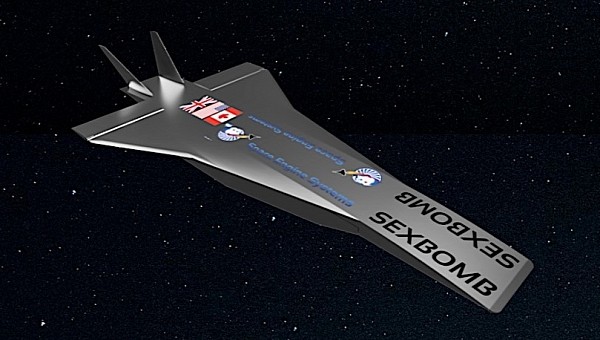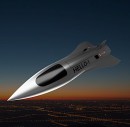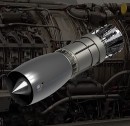The space exploration industry is so diverse these days in terms of technologies being tested that it’s impossible to tell which of them will mature into the ones to make our species a truly multiplanetary one.
One of the projects we’re rooting for is that of spaceplanes being cooked in the laboratories of a company called Space Engine Systems. That would be the Hello-1 (suborbital cargo and crew transporter), and Hello-2 (suborbital and low lunar orbit plane), both capable of making trips to space for as little as $300 per kg.
We’re a long way from that moment, though, as Space Engine Systems is only at the stage when it’s getting ready to test a demonstrator for the spaceplanes. In effect a drone named Sexbomb, it’s meant to prove the capabilities of a turbo-ramjet engine dubbed DASS GNX.
The DASS GNX is a turbo-ramjet meant to kick in as an after-burning turbojet at speeds of between zero and Mach 3. When the drone passes past the Mach 3 mark, it behaves like a ramjet, delivering 20,000 lbf of thrust.
Although a definitive test flight for the Sexbomb was never announced, we did know the company planned to test the drone over the Canadian province of Manitoba. This week, a change of plans was announced, with the test flight now to take place at Cornwall Spaceport in the UK. The date for it still hasn’t been announced, but we are told an upgrade for the DASS GNX is in the pipeline.
The initial plan for the Canada test flight called for a stratospheric balloon to lift the Sexbomb to 33.5 km (110,000 ft), from where it would have dropped until it reached speeds of Mach 1.8. Once there, the engine would have ignited, shooting the thing to Mach 5 for about 300 seconds. After the burn had been completed, the drone would have glided down to its home base.
Space Engine Systems did not say if the change of location is accompanied by a change of procedure as well.
We’re a long way from that moment, though, as Space Engine Systems is only at the stage when it’s getting ready to test a demonstrator for the spaceplanes. In effect a drone named Sexbomb, it’s meant to prove the capabilities of a turbo-ramjet engine dubbed DASS GNX.
The DASS GNX is a turbo-ramjet meant to kick in as an after-burning turbojet at speeds of between zero and Mach 3. When the drone passes past the Mach 3 mark, it behaves like a ramjet, delivering 20,000 lbf of thrust.
Although a definitive test flight for the Sexbomb was never announced, we did know the company planned to test the drone over the Canadian province of Manitoba. This week, a change of plans was announced, with the test flight now to take place at Cornwall Spaceport in the UK. The date for it still hasn’t been announced, but we are told an upgrade for the DASS GNX is in the pipeline.
The initial plan for the Canada test flight called for a stratospheric balloon to lift the Sexbomb to 33.5 km (110,000 ft), from where it would have dropped until it reached speeds of Mach 1.8. Once there, the engine would have ignited, shooting the thing to Mach 5 for about 300 seconds. After the burn had been completed, the drone would have glided down to its home base.
Space Engine Systems did not say if the change of location is accompanied by a change of procedure as well.









